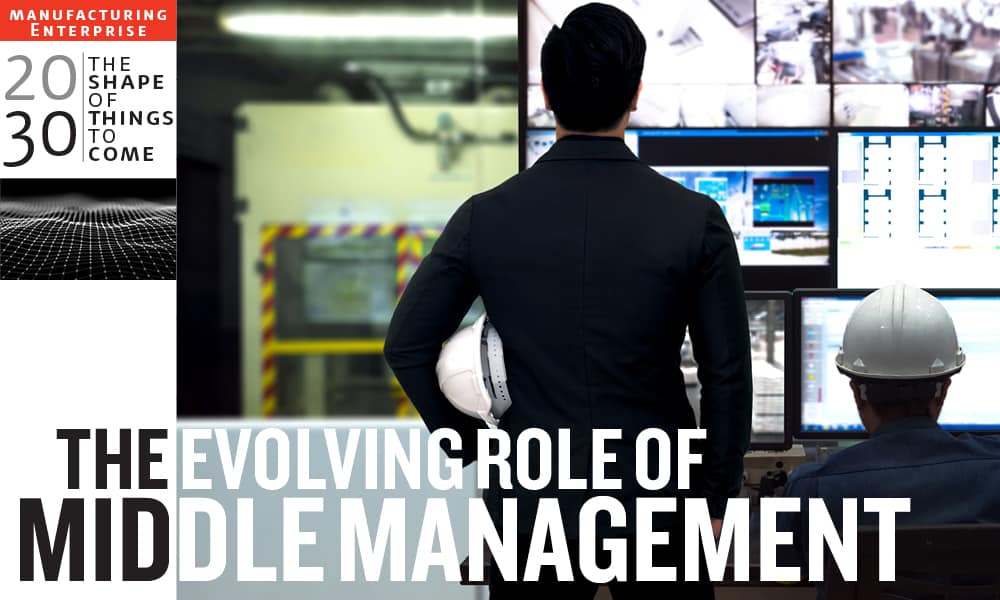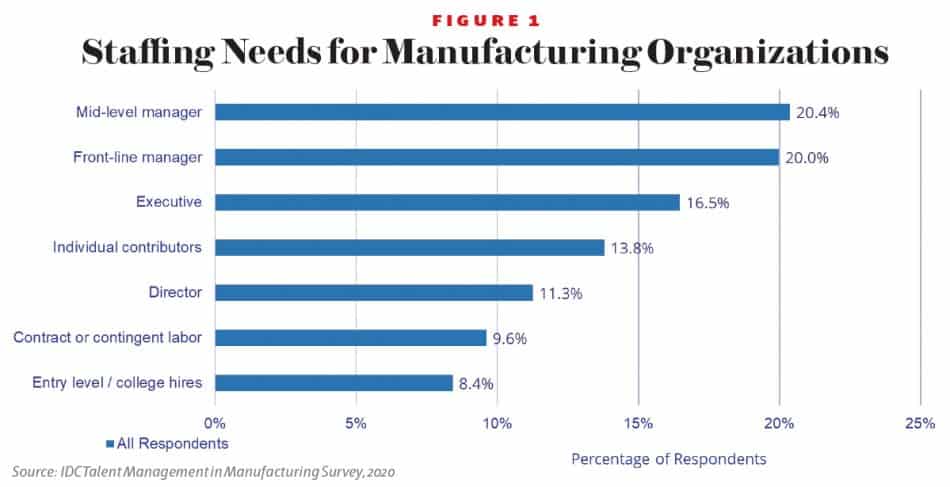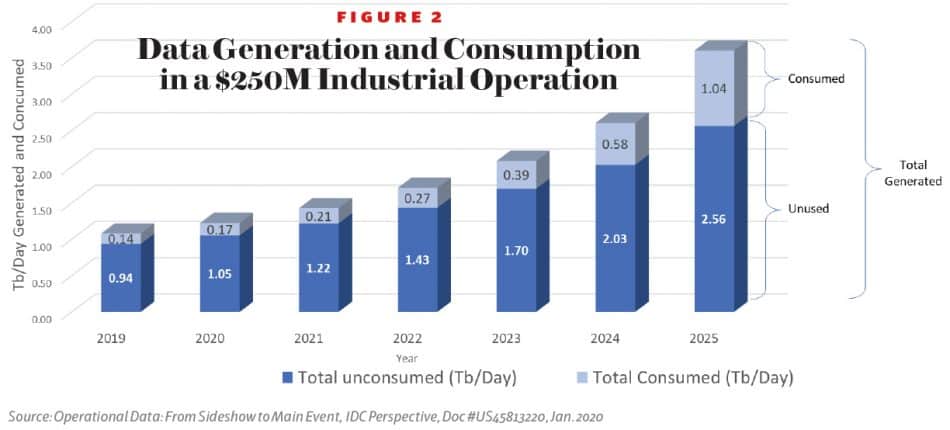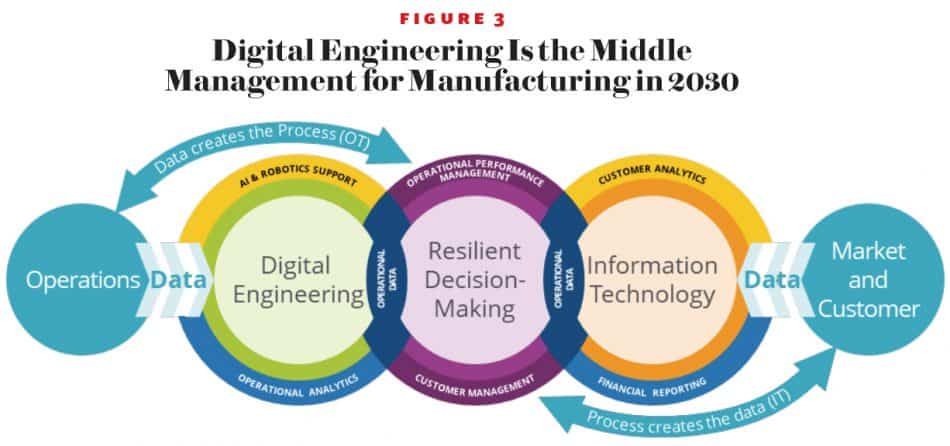
Middle managers have been a part of organizational hierarchy since humans started working together. But that role must change as traditional manufacturing transforms to a data-driven digital engineering model. By Kevin Prouty
Middle management is so engrained in how we operate that few people even consider or question the reason for its existence. For centuries, the owner or executive level of any sizeable organization has relied on managers, supervisors, foremen, or other middle managers to translate executive decisions into realistic tasks for individual workers. That same flow happens in reverse: Information on operational progress traditionally has had to move up the chain to become digestible information for senior managers.
There’s a reason for this historical hierarchy. A person can only handle so much data and information in a short period of time — and they can only make a limited number of effective decisions at the same time. But this middle management-based hierarchy comes with a cost.
For example, it can take days, week, and even months for the information senior decisionmakers need to make its way up through layers of staff, each of whom must collate, analyze, and interpret the data — and each of whom also have biases shaped by personal goals, KPIs, and incentives. Once the data is collated into actionable information, orders or tasks must then make their way down that same middle management layer.
All that up-and-down activity means that, by the time the decision reaches the point of activity, there is a good chance the decision is obsolete.
In addition, middle managers tend to create or reinforce siloes in the organization and unintentionally limit free collaboration.
In fact, as Figure 1 shows, one of the biggest concerns manufacturing companies have today from a staffing perspective is not engineers and technical staff driving innovation, its middle managers.
The insatiable need for middle managers is directly attributable to the explosion of data and the increasing demands from senior management for faster decision-making cycles. But effective middle managers must have a unique combination of detailed domain expertise, creativity, charisma, and ambition. These traits are very hard to find in combination, especially for manufacturers, which tend to struggle with a skills gap and is generally viewed as less appealing than other industries by the younger workforce.

The Data Dilemma
We are at the precipice of revolution in how manufacturing organizations operate. By 2030, we believe that the middle management layer of large manufacturing organizations will begin to compress until it eventually becomes a very thin layer of people who manage a highly structured decision-support system. That system will be based on the massive data flows coming into and out of the operation. As Figure 2 shows, data volumes are only increasing in industrial companies.
The four main areas driving this increase in data are connected operational assets, video as a sensor, supplier information, and connected product information. Manufacturing organizations will very quickly be overwhelmed not just by the data being generated, but by the demand from employees that need to consume it.
The dilemma around data leaves manufacturing companies with only a few options:
- Hire more middle managers in the areas of operations and IT to ingest, collate, and report information (which is already a difficult role to fill).
- Ignore the data and risk insights into operational performance that your competitors will have from their operations.
- Develop a consistent, defined, accessible system that can ingest, analyze, and present decision options to senior management rapidly and effectively — and take decisions back down to the point of activity.
- Employ artificial intelligence (AI) is as the main tool companies will have to manage the data dilemma. However, AI is itself a data monster that requires massive amounts of data to operate effectively.
Modern AI systems are very effective at ingesting large data feeds, rapidly analyzing the data, and prescribing answers or guidance that senior managers can use to make final decisions that impact operations and the company. AI can then take those decisions and rapidly translate them into tasks for staff in the plants. In fact, by 2030, a number of those tasks will be automated themselves.
The main takeaway is that AI represents the largest area of untapped potential to combat this manufacturing data issue: AI-based automation can flip decision making from human-led all the way to machine-controlled.


Digital Engineering: The New Middle Management
But these new data-centric systems are just one piece of the transformation to what IDC calls the Digital Engineering organization. IDC’s vision of the Future of Operations (IDC Perspective: Digital Engineering and the Future of Operations, April 2020) is for an operation based on resilient decision-making that is driven by customer and market activity. The core of that new organization is senior decisionmakers sitting within an AI-driven decision-making framework fed by business and market information from IT and operational information from Digital Engineering.
The DE organization is the new middle management in operations. This staff has a combination of domain expertise, some IT skills, and digital capabilities — which are some of the skills that middle management was developing anyway. Successful middle managers not only had domain expertise, but they had learned through experience how to work with IT. And they tended to lead the way in digital projects. All the Digital Engineering organization is doing is recognizing the shifting of responsibilities for operational data needs to the DE group staffed from various siloes in the organization.
But that transformation of middle management to DE will encompass completely new responsibilities. Instead of being the collators and interpreters from senior management to point of activity, they will manage the digital systems that do that through operationally focused data ingestion, data governance, cybersecurity collaboration with IT, AI, and analytics model management. Probably one of the biggest changes is that fewer people are needed to support these systems, compared to current human-focused middle management decision support infrastructures. IDC estimates that an AI-driven decision-support system operated by DE will reduce middle management staffing by 40% in 2030, and up to 65% by 2050.
This doesn’t mean that middle management is dead, but it does mean it needs to transform. In the near term companies need to create these support structures to hasten business and reduce bottlenecks. It’s also important to be realistic —at this moment in time I do not believe anyone can automate access to data and decision frameworks to the point where middle managers are literally exiting the workforce. Again, the transformation is that middle managers must become digital engineering staff. In that role they become less movers of data and more owners of a rapid and resilient decision-making framework. M
FOOTNOTES
1 Niall McCarthy,” Rise of the Machines: The Countries with the Highest Density of Robot Workers,” Forbes, Sep 28, 2020, https://www.forbes.com/sites/niallmccarthy/2020/09/28/rise-of-the-machines-the-countries-with-the-highest-density-of-robot-workers-infographic/amp
2 Ibid.
3 Emil Protalinski, “Boston Dynamics CEO talks profitability and the company’s next robots,” Venture Beat, Sep 14, 2020, https://venturebeat.com/2020/09/14/boston-dynamics-ceo-profitability-roadmap-next-robots/
4 Manufacturing Leadership Council, “Vision 2020: The Factory of the Future,” 2017. https://www.mljournal-digital.com/meleadershipjournal/ february_2017? pg=25#pg25
5 Art Markman, “How You Define the Problem Determines Whether You Solve It,” Harvard Business Review, June 6, 2017, https://hbr-org.cdn.ampproject.org/c/s/hbr.org/amp/2017/06/how-you-define-the-problem-determines-whether-you-solve-it
6 Manufacturing Leadership Council, “Vision 2020: The Factory of the Future,” 2017.
7 Niall McCarthy,” Rise of the Machines: The Countries with the Highest Density of Robot Workers,” Forbes, Sep 28, 2020, https://www.forbes.com/sites/niallmccarthy/2020/09/28/rise-of-the-machines-the-countries-with-the-highest-density-of-robot-workers-infographic/amp/[/et_pb_text][/et_pb_column][/et_pb_row][/et_pb_section]